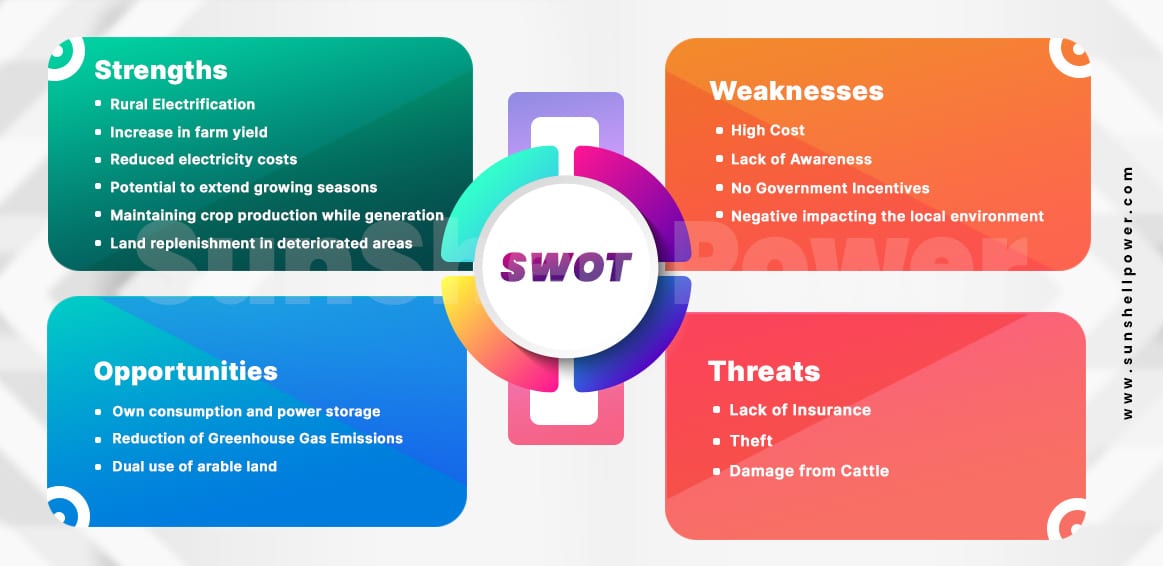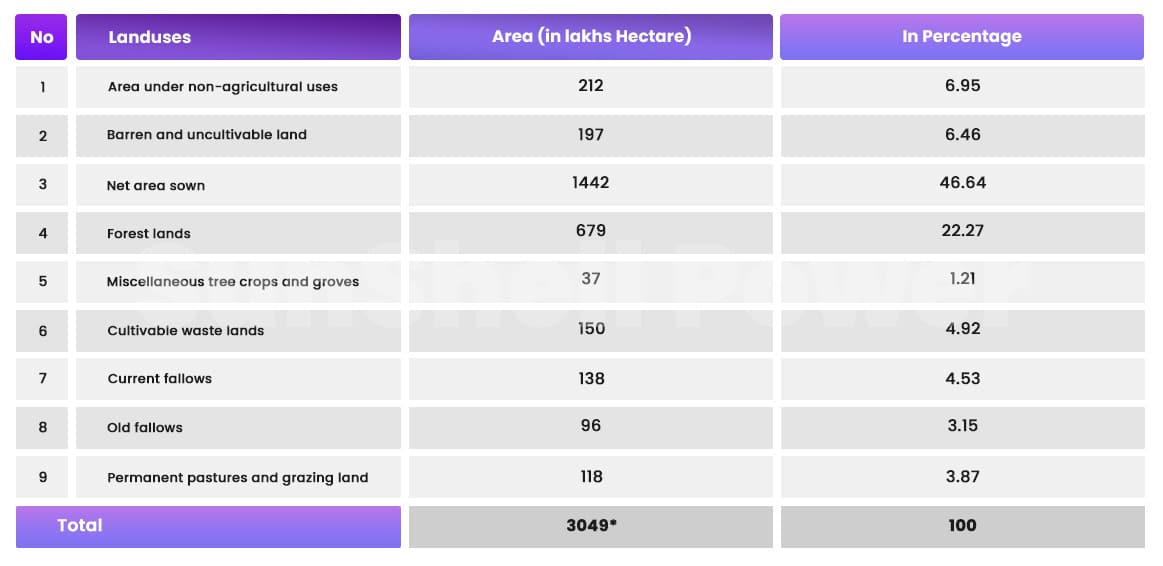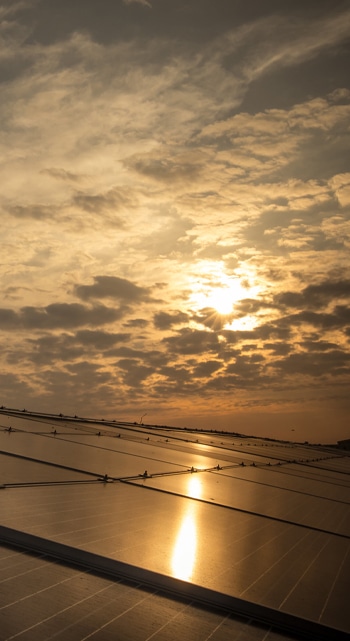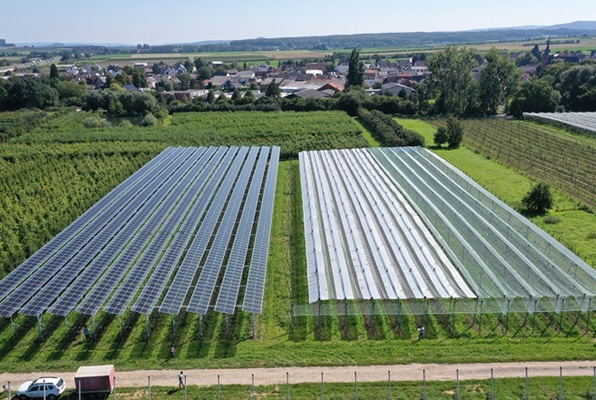What are Agri-Voltaics?
Agrivoltaics enables land to be used for both agriculture and photovoltaic power generation at the same time. On the very same plot of land, food crops and power can be harvested.
This innovative technology promises to boost food output and cut water consumption while simultaneously generating electricity and cash. Solar panels put on the same ground where crops are cultivated effectively allow growers to harvest the sun’s energy twice.
Agrivoltaics offers even more opportunities for photovoltaics and agriculture synergies, such as:
- Lowering irrigation requirements by up to 20%
- Reduction in Wind Erosion
- Use of the PV mounting structure for protective nets or foils
- Optimising light availability for arable crops, e.g. PV tracking systems
- Higher module efficiency through better convective cooling
- Higher efficiency of bifacial modules due to larger distances to the ground and adjacent module rows
Application Points

SWOT Analysis of Agri-Voltaics

Land Usage in India
The agricultural land in India is little more than 50 per cent of the total geographical area in the country. This is the highest share of land in any country in the world

Land Utilisation


Croplands
In agri voltaics, the solar panels are installed with higher ground clearance for letting the crop grow underneath. Additionally, unlike a typical solar farm where the solar panels are tightly installed to maximise land use, in agri voltaics, the solar panels are installed with sufficient clearance for easy movement of the farmers and farm equipment.
On similar lines, agrivoltaics also offers to generate additional income. A grid-tied solar panel enables farmers to sell the excessively generated electricity to utility companies.

Grasslands
Agrivoltaics is a solution which might be able to become less dependent on fossil fuels, lower production costs, increase land efficiency, improve forages and crops for use by dairy cattle, and increase milk production and health in dairy cows.
Agro Photovoltaic (APV) systems are being developed as a means to combine PV and food production on the same piece of land.
Some lettuce varieties provide higher yields in the shade than in direct sunlight, while others produce about the same yield under open skies and under PV panels.Achieving food and energy security will only be possible with a shift to ecologically and environmentally sustainable management of agricultural systems that build resilience to climate change.

Green Houses
Main countries like Spain,France & Germany have looked at the potential of agri voltaics for greenhouses in areas with high crop cultivation in greenhouses. The researchers found that the optimum PV system for greenhouses is an array that reduces the annual net photosynthesis rate by up to 10% and has only a marginal impact on crop yield.
Benefits of Agrivoltaics
For Solar EPC and developers
- Reduced installation costs – The utilisation of previously tiled farmland could eliminate the requirement for costly grading to make land usable.
- Increase PV performance – Under-module vegetation can help to reduce soil temperatures and improve the solar performance.
- Accelerate the energy transition – More landowners would likely be interested in using their property for energy reasons if they joined forces with land managers and rural areas.
- Building closer links with the agricultural world – The solar industry would benefit from adjusting to the sector and favouring both operations.
- Reduced upfront risk
- Reduced legal risk – Solar installers can limit the possibility of up front litigation during the environmental review process by using previously disturbed land.
- An opportunity to market to a green-minded audience.
For Land Owners
- Reduced electricity costs – developers and landowners may reach an agreement to allocate a percentage of the generated electricity to the land and/or town.
- Diversification of the revenue stream.
- Increased ability to install high-value, shade-resistant crops for new markets – The shading by the PV panels provides multiple additive and synergistic benefits, including reduced plant drought stress and more constant temperature as the panel will maintain the temperature higher at night and colder during the day.
- Potential to extend growing seasons.
- Maintain crop production during solar generation.
- Allow for nutrient and land recharge of degraded lands.
- Potential for water use reduction.
Enquire Now

